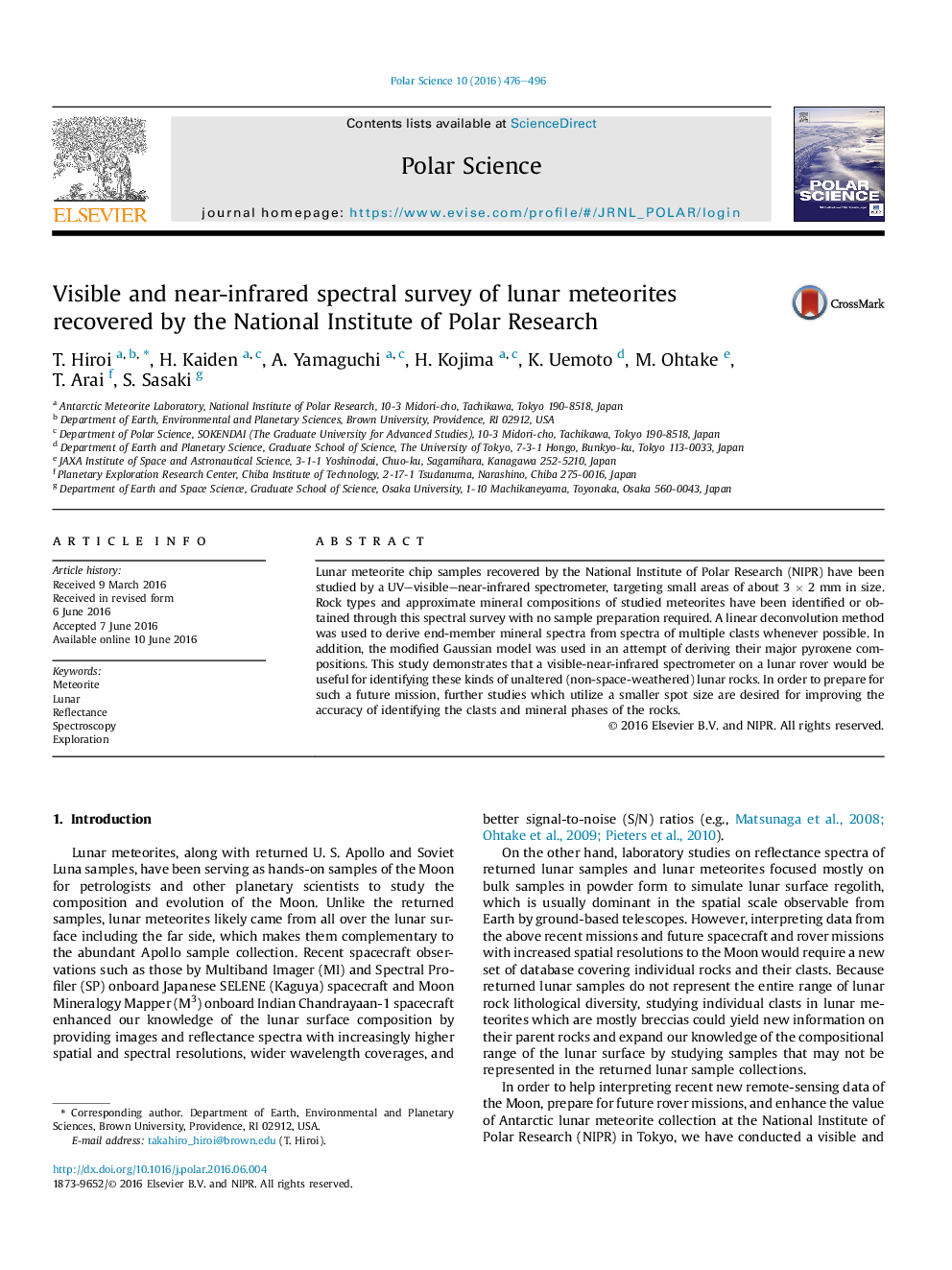| Article ID | Journal | Published Year | Pages | File Type |
|---|---|---|---|---|
| 6431517 | Polar Science | 2016 | 21 Pages |
Lunar meteorite chip samples recovered by the National Institute of Polar Research (NIPR) have been studied by a UV-visible-near-infrared spectrometer, targeting small areas of about 3Â ÃÂ 2Â mm in size. Rock types and approximate mineral compositions of studied meteorites have been identified or obtained through this spectral survey with no sample preparation required. A linear deconvolution method was used to derive end-member mineral spectra from spectra of multiple clasts whenever possible. In addition, the modified Gaussian model was used in an attempt of deriving their major pyroxene compositions. This study demonstrates that a visible-near-infrared spectrometer on a lunar rover would be useful for identifying these kinds of unaltered (non-space-weathered) lunar rocks. In order to prepare for such a future mission, further studies which utilize a smaller spot size are desired for improving the accuracy of identifying the clasts and mineral phases of the rocks.
